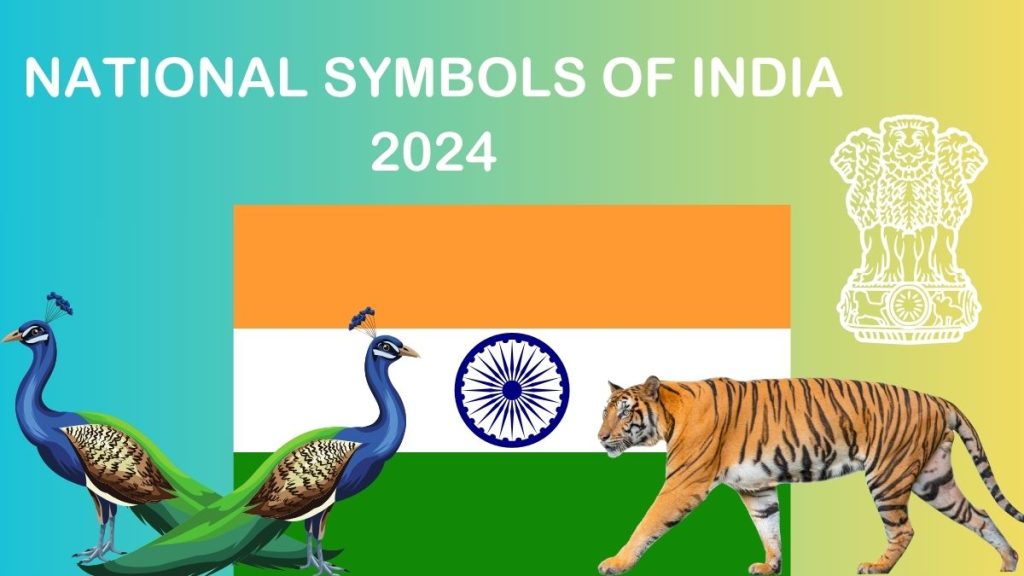India is a beautiful example of how different faiths can live together in harmony. This is because of its “unity in diversity,” which is like a colorful kaleidoscope of traditions, customs, and beliefs. The national symbols of India are not just political signs; they are much more. They reflect the country’s rich history, culture, and identity. These symbols are proof of the values we cherish deeply. They remind us of India’s past greatness and its dreams for the future. They also fill people with pride and a sense of nationalism, creating a shared connection to the nation’s cultural evolution.
These symbols also show that India has a value-based government. The Indian Constitution highlights these values, calling India a Sovereign, Socialist, Secular, Democratic Republic. The national symbols represent the collective history of India and the unity of all living beings in the country. They are not just symbols; they are a reflection of India’s cultural heritage and national identity.
In this blog, we will dive deep into India’s national symbols. We will explore their historical significance and their role in uniting the nation. Keep reading as we explain these symbols in detail. They are not just signs; they are powerful tools that showcase India’s global presence and cultural identity to the world. Through them, we tell the story of who we are and what we stand for.

What Are Indian National Symbols?
Indian national symbols are symbols or icons that portray the sovereignty, culture, and traditions of India. They form a part of India’s identity, representing the unity in diversity that India embraces. From the regal Royal Bengal Tiger, a symbol of inner strength and bravery, to the harmonious Indian Peacock, a symbol of beauty and grace, all the symbols have been selected very carefully to denote the values and heritage of India.
These symbols fill the heart of each Indian with pride and remind them of the glorious past and future hopes of the nation. You should know some popular Indian national symbols, such as the Indian National Flag (Tiranga), which symbolizes strength and coexistence with its saffron, white, and green colors. The Lotus, India’s national flower, represents purity and spiritual awakening, while the Banyan Tree, the national tree, symbolizes immortality and resilience. Other notable symbols include the Indian Rupee, the National Emblem (Ashoka Chakra), and the National Anthem (Jana Gana Mana), which evoke a sense of patriotism and unity. Each of India’s national symbols holds deep meaning, reflecting the spiritual, cultural, and timeless nature of Indian heritage. These national symbols inspire pride and patriotism in every Indian, celebrating the unity in diversity that defines the country.
Types of National Symbols of India
Now that we have seen that each national symbol is of a different meaning, you must know the various types of national symbols in India. You should understand that the various kinds of national symbols are a cross combination of various animals, birds, flowers, trees, rivers, and even historical landmarks with plenty of importance to the nation. There’s one thing that you should understand and that’s the fact that every national symbol of India was selected because they symbolize several aspects of India. Every one of these symbols have been selected because they symbolize the different colours and shades of India’s multicultural and richly diverse cultural background.
To put you in touch with what they are, below are some listed:
National Flag – The Tricolor (Tiranga)
The Indian National Flag, or the ‘Tiranga’ (Tricolor) is a symbol of pride for India and its independence. Seeing the flag hoisted high does trigger a feeling of patriotism in the people. The Tiranga was given the status of the Indian National flag on July 22, 1947. The National Flag is made up of three horizontal bands of saffron, white and green colors.The navy blue Ashoka Chakra of 24 spokes has been kept in the centre of the flag.The Ashoka Chakra is a symbol of righteousness, progress and bravery.
National Anthem – Jana Gana Mana
Written by the Nobel laureate Rabindranath Tagore, India’s National Anthem, “Jana Gana Mana,” is a classic tribute to the nation’s diversity and unity. It eloquently talks of the real essence of our nation and is an ode to its rich heritage, diverse landscapes, and the collective identity of its people. The national anthem was officially adopted on January 24, 1950. The national anthem has a very respected position in India’s culture. It is a part of ceremonies and events of an official nature where it is sung with pride and respect.It’s melodious and beautiful tune along with its powerful lyrics have always awakened people’s patriotic fervor.
National Song – Vande Mataram
Composed by the great writer Bankim Chandra Chatterjee, Vande Mataram is a strong song that motivated numerous people during India’s Freedom Struggle. Composed in Sanskrit and Bengali, it extols the motherland, depicting it as a source of strength and riches. Now referred to as the National Song, it is equal in importance to the National Anthem. It continues to evoke love for the nation and unites people to celebrate India’s freedom and culture
National Animal – Royal Bengal Tiger
The Royal Bengal Tiger, India’s National Animal, represents strength, power, and beauty. Priding itself in being found in the Indian forests, this majestic creature keeps nature at its best by regulating prey populations. Revered for its beauty and grace, the tiger is also representative of India’s nurturing of its wildlife. In declaring it the National Animal, India promises to protect nature and emphasizes the ethos of strength and courage in Indian society.
National Bird – India Peacock
The Indian Peacock, with its stunning feathers and elegant dance, represents beauty, grace, and pride. Chosen as India’s National Bird in 1963, the peacock is extremely significant in culture and religion, frequently depicted in Indian art, literature, and traditions. Associated with Lord Krishna, it brings a sacred connotation to its symbol. The peacock depicts India’s abundance of wildlife and diverse cultures, thus becoming a powerful symbol of the nation’s beauty and nature.
National Flower – Lotus
The Lotus is a water flower and is India’s National Flower. Beautiful and with a clean appearance, it grows in dirty water but flowers pure and white, indicating strength and spirituality. Closely associated with Indian beliefs and mythology, the lotus is holy in Hinduism and Buddhism, associated with profound wisdom and peace. Symbolically, it indicates India’s capacity to emerge above problems yet maintain its inner beauty and strength.
National Tree – Banyan Tree
Banyan Tree, with its wide canopy and aerial roots, is a forever gorgeous symbol of immortality, protection, and resilience. Chosen as India’s National Tree, it represents strength and resilience, offering shade and sustenance to countless beings. This tree also holds a revered position in Indian society, being often present in mythology as a center of wisdom and knowledge. Earnest for its long existence and ability to expand without limit, the banyan tree is a fitting emblem of India’s enduring and nurturing nature.
National Fruit – Mango
The Mango, also known as the “King of Fruits,” is India’s National Fruit. Praised for its sweetness, strong smell, and many varieties, it has been cherished forever. Mangoes are accorded a special status, appearing in Indian paintings, literature, and food. The fruit is a symbol of prosperity, love, and abundance. By making the mango its national fruit, India boasts of this tropical jewel that remains an important part of its culture.
National River – Ganga
The Ganga, or Ganges in English, is a river that goes beyond the common meaning of that term.It’s a National River and means sustenance for millions in India.A revered goddess in Hinduism, it is sacred and highly revered because of its attachment to India’s faith and tradition. It passes through India and supplies water, enables the crops to grow, and supports countless varieties of life. Its position as the National River further accentuates its huge role in shaping India’s way of life.
National Emblem – Lion Capital of Ashoka
The Lion Capital of Ashoka of Sarnath is India’s National Emblem. It is sculpted in sandstone and shows four lions with their faces facing away from each other, symbolizing strength, bravery, and faith. Below them is the Dharma Chakra, or the Wheel of Law, symbolizing India’s role for justice and truth. It became the National Emblem in 1950 and is found on currency, documents, and government offices, reminding people of India’s glorious past and strong values.
If you must know the national symbols of our nation in depth, have a look at the table provided below:
| Name | Symbol |
| National Flag | Tricolour (Tiranga) |
| National Emblem | Lion Capital of Ashoka |
| National Anthem | Jana Gana Mana |
| National River | Ganga |
| National Fruit | Mango |
| National Tree | Banyan Tree |
| National Bird | Indian Peacock |
| National Animal | Royal Bengal Tiger |
| National Song | Vande Mataram |
| National Flower | Lotus |
The Importance of India’s National Symbols
Now that we know some of the national symbols of India you need to know why they’re so significant as a whole. Sure, we know why each one was selected, but you need to understand why it’s so essential there is so much significance placed on them. Ponder their significance below:
- Cultural Significance: Every symbol for a country embodies some special attribute of India’s rich traditions. The colorful Indian Peacock symbolizes beauty, and the sacred Lotus symbolizes purity and spirituality. All of these symbols constitute the nature of Indian culture.
- Unity in Diversity: In a nation as diverse as India, these symbols bring people together regardless of tongue, religion, and location. The Tiranga, being a blend of colors, is actually a symbol of unity in variety.
- Global Symbols: These symbols reflect India’s distinctive place in the world. They showcase India’s rich culture and surroundings, taking its history and values everywhere across the globe.
- Inspiration: All the symbols inspire people to live life as per the values that it symbolizes. The Bengal Tiger inspires bravery and power, the Ganga inspires clean and continuous life, and the Ashoka Lion inspires justice and truth.
Summing Up
India’s national symbols represent its wide and vibrant culture. From the strong Royal Bengal Tiger to Jana Gana Mana’s soothing tune, these symbols bring pride and honor to every Indian. Learning about India’s 10 national symbols, their categories, and their meanings helps us enjoy their story. We must make ourselves and the young generations aware of these symbols so as to perpetuate the values they stand for.
At ixamBee, we specialize in providing comprehensive online courses for government exams and online courses for government jobs. Our expertly designed courses for government jobs cater to a wide range of upcoming government exams. Whether you’re preparing for specific courses for government exams or seeking general guidance, ixamBee offers the resources like Beepedia previous year papers, SSC CGL, SSC CHSL, SSC MTS and other mock tests to succeed in exams like RBI Grade B, SEBI Grade A, NABARD Grade A, RRB NTPC, SSC MTS, NIACL Assistant, and more.
Also Read:
Current Affairs Preparation for the RBI Grade B Exam: A Comprehensive Guide
Maharashtra & Jharkhand Election Results 2024 Highlights
List of Wildlife Sanctuaries in India: Discover Nature’s Hidden Gems














